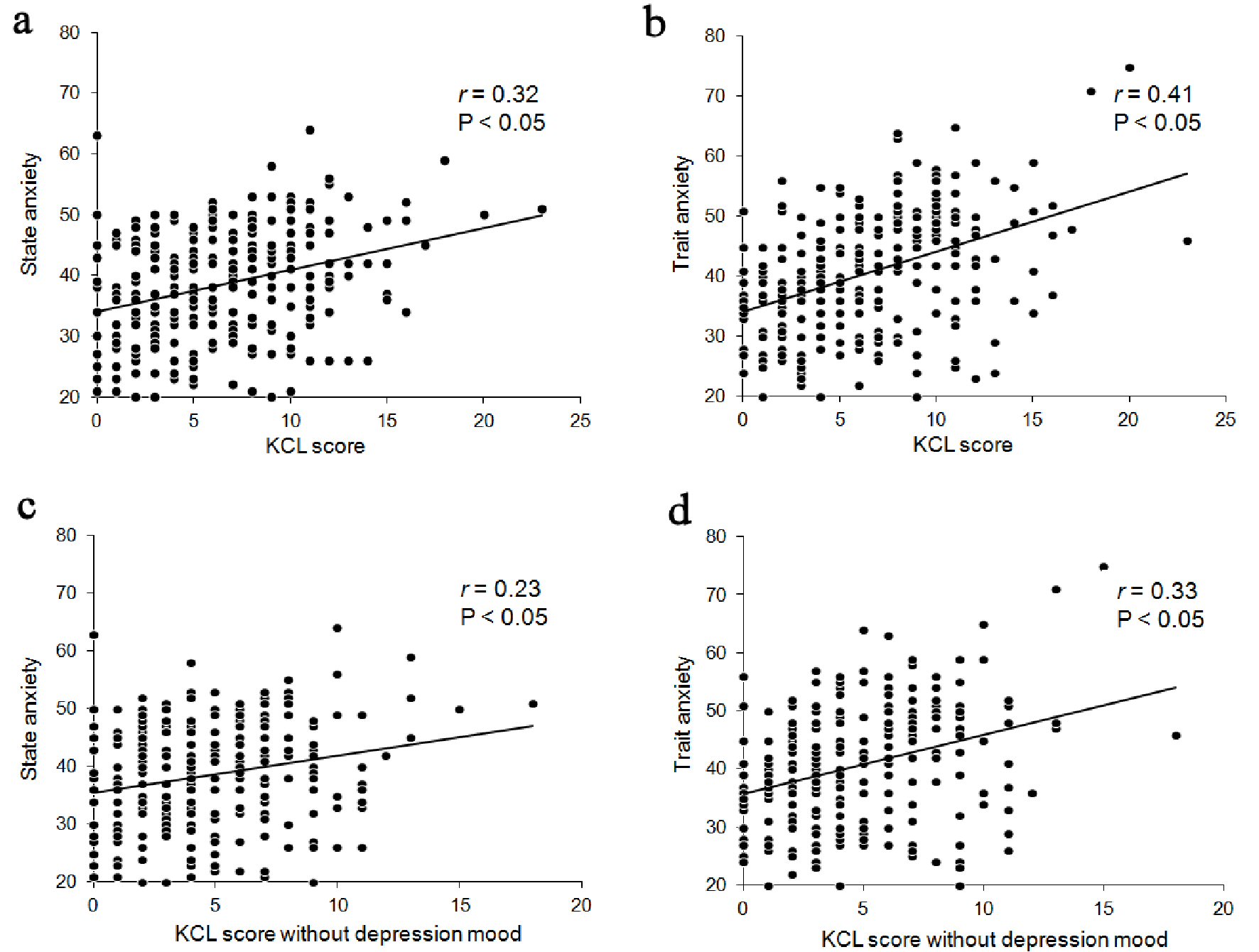
Figure 1. Correlation between KCL scores and anxiety levels. KCL score correlated with state anxiety (r = 0.32, P < 0.05) (a) and trait anxiety (r = 0.41, P < 0.05) (b) in elderly patients undergoing early phase II CR (n = 255). KCL score, excluding depression mood, correlated with state anxiety (r = 0.23, P < 0.05) (c) and trait anxiety (r = 0.33, P < 0.05) (d) in elderly patients undergoing early phase II CR (n = 255). KCL: Kihon Checklist.